Upper Peninsula project monitors water conditions on clay soils
Using high-tech monitoring equipment, MSU Extension worked with local farmers in 2021 to explore effectiveness of innovative approaches to improving soil drainage on challenging clay soils.

Farmers in the western and eastern clay soil areas of Michigan’s Upper Peninsula identified field drainage as a highly important issue during round-table discussions with Michigan State University Extension educators in 2014 and 2018. Improving soil drainage has potential for significant impact on local agriculture based on ability to graze or plant earlier in spring and graze or harvest later into fall. Possibilities also include a wider selection of potential crop choices and expanding from the current one-cut hay system to a two-cut system.
An initial effort to monitor soil moisture on farms in these areas was made in 2019 with financial support from the MSU Extension program grant fund. MSU Extension educators Jim Isleib and Frank Wardynski managed the project, with assistance from MSU Extension irrigation specialist Steve Miller. The five farmers recruited to participate were using various methods to improve soil drainage on their fields, including surface drains, subsurface tile drains, deep tillage and soil aeration using an AerWay implement.
Soil drainage conditions were monitored using vacuum meter soil tensiometers, comparing fields under the farmer improvement method to an adjacent field not under the method. These tools required on-site reading and frequent maintenance. For these reasons, and in combination with drought conditions in the western Upper Peninsula, data collection was incomplete. An article summarizing the 2019 effort can be reviewed at “Clay soil moisture monitoring project explores farmer’s efforts to improve drainage.”
The effort was continued in 2021 with a new MSU Extension Project GREEEN grant. Four of the original cooperating farmers hosted soil water monitoring sites. Younsuk Dong, MSU assistant professor and irrigation specialist, constructed improved volumetric soil measurement systems for the project. Dong visited each field on May 26-27, 2021, along with the local MSU Extension team member to accomplish equipment installation.
The improved units include a solar panel to power data collection and transmittal to local cell phone service, along with a mini-SD card for data backup. Sensors were installed at three depths under each unit. Volumetric soil water measurements were collected and transmitted at intervals of 1 hour.
Dong used LOCOMOS (low-cost sensor monitoring system) software to collect and interpret the data. At least two of the units experienced problems with data transmission during the growing season. Backup data from the mini-SD cards was collected and included in the data set. One unit in Rudyard, Michigan, was knocked down and damaged, with the mini-SD card ruined by water infiltration into the unit.
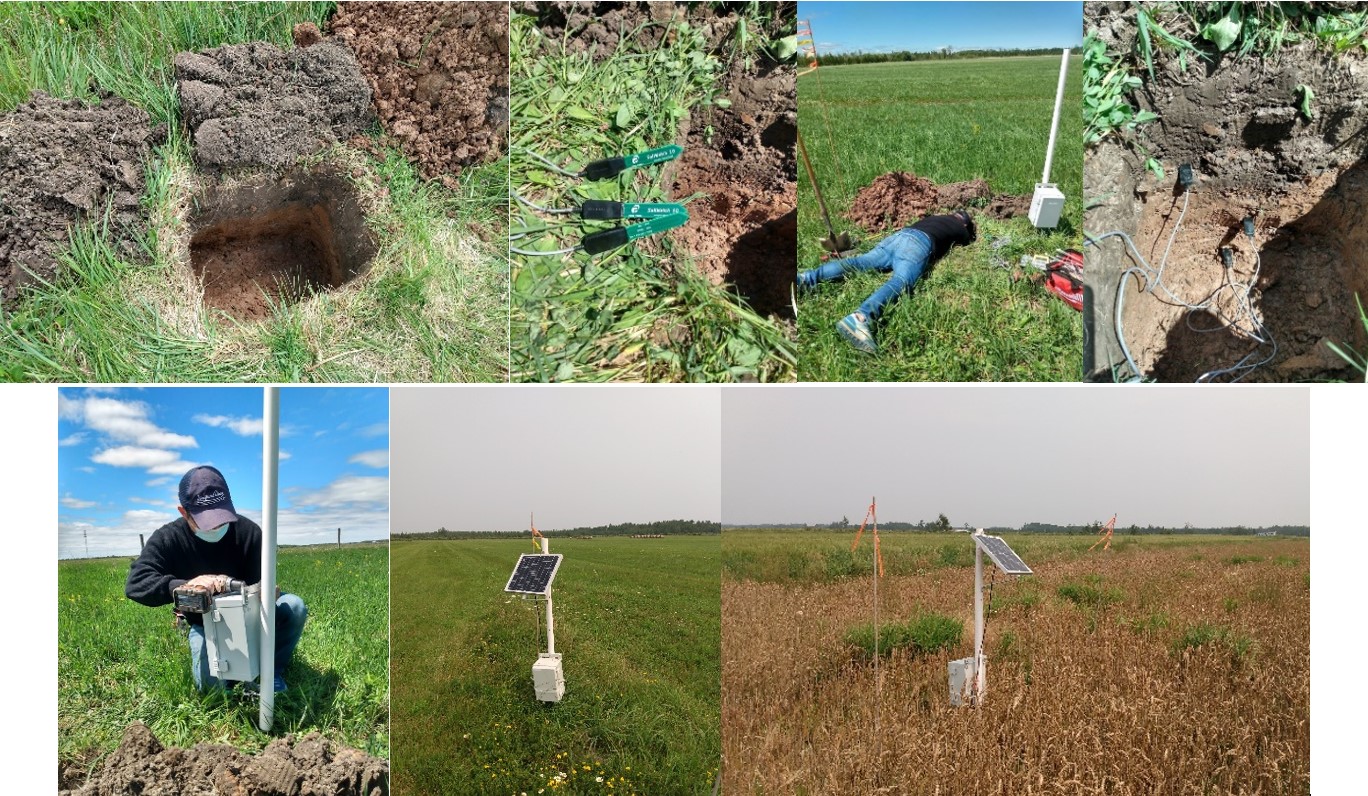
Results
The first field is in Rudyard, Michigan. We installed two LOCOMOS stations in two management areas. One treatment area was deep-tilled before establishment in 2008 and another treatment area was deep-tilled in 2019. Each LOCOMOS station monitored soil moisture levels at 6-, 12- and 24-inch soil depths. Figure 1 shows the top 30-inch composite water availability from each area. The data indicates that the field tilled in 2019 seems to have better drainage than the field tilled in 2012.
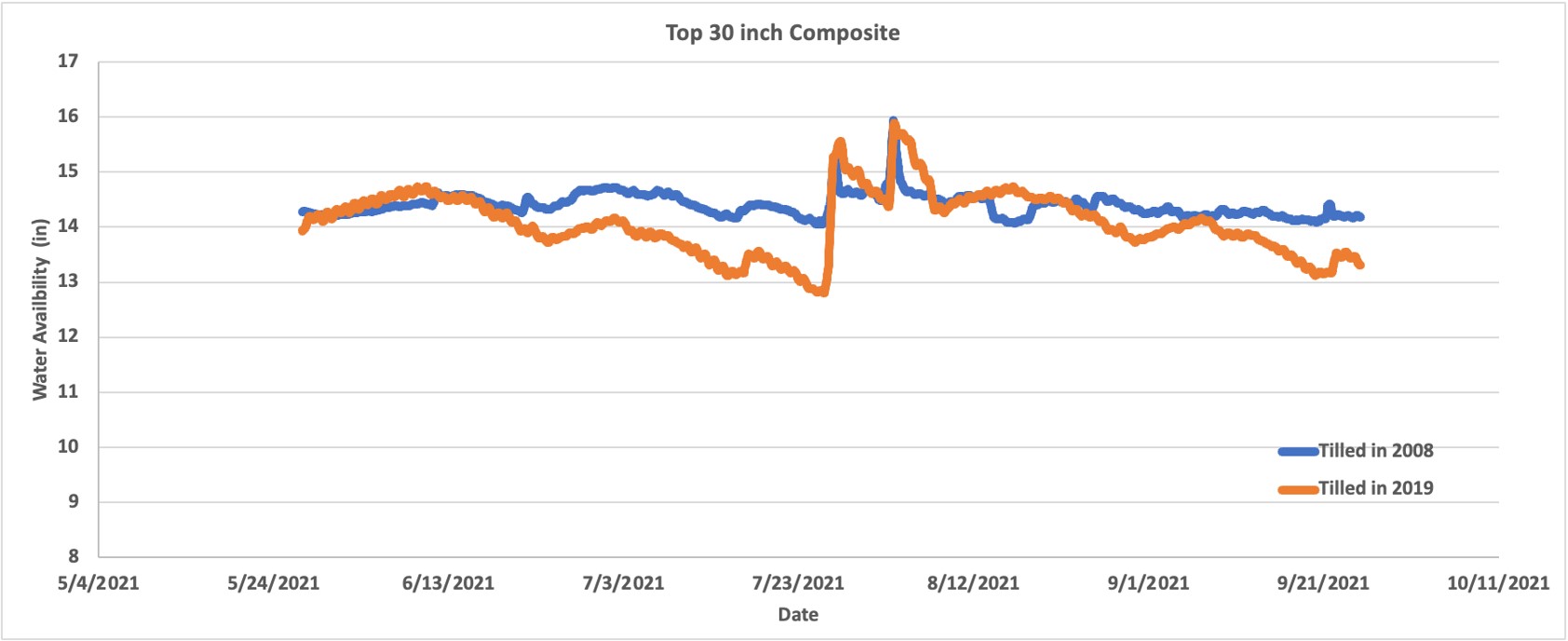
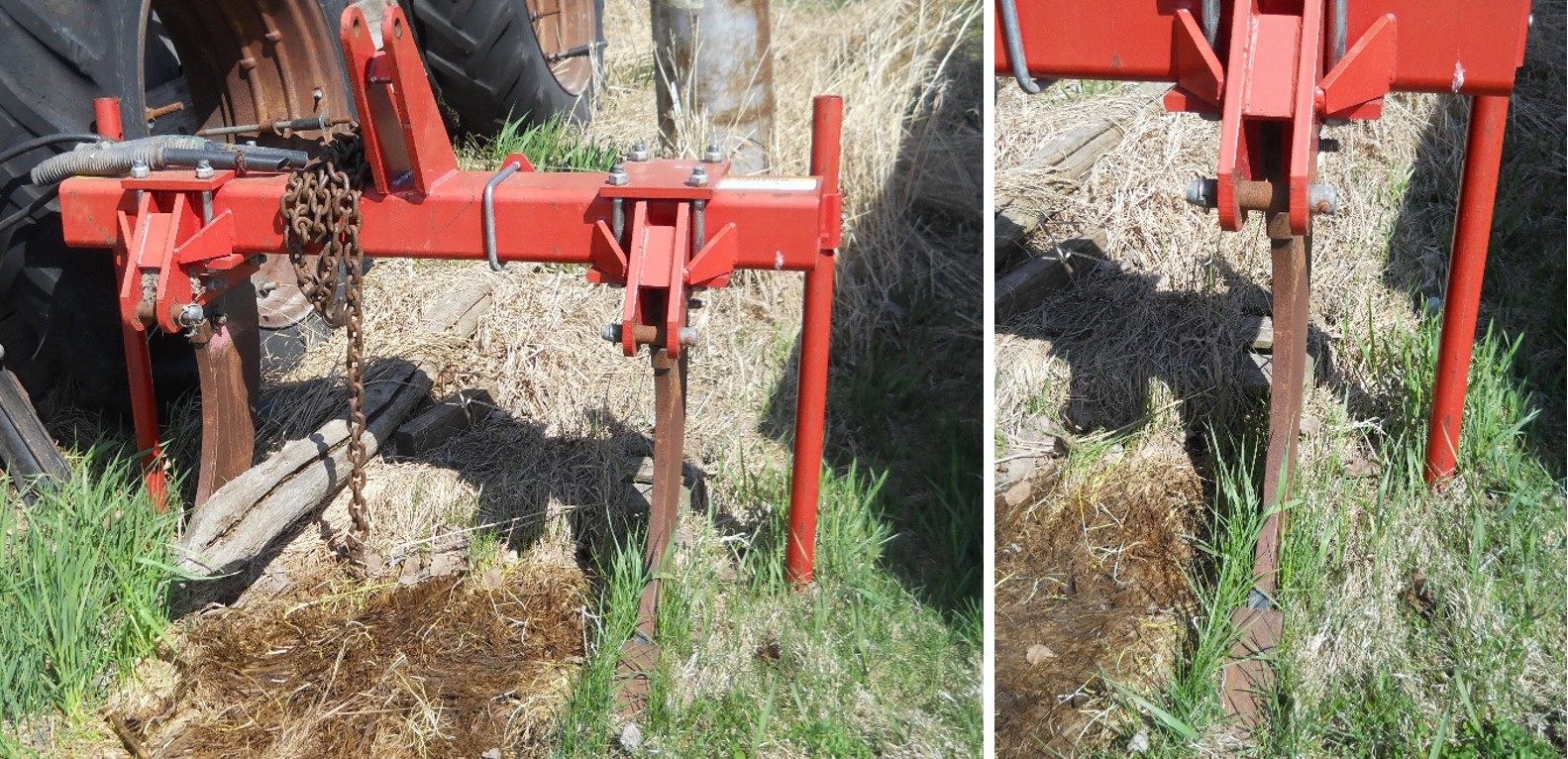
The second field is in Dafter, Michigan. We monitored soil moisture levels in control and drainage tile-installed areas. Figure 2 shows the top 30-inch composite water availability from each area. This graph shows that the area where drainage tile is installed has better drainage than the control area.
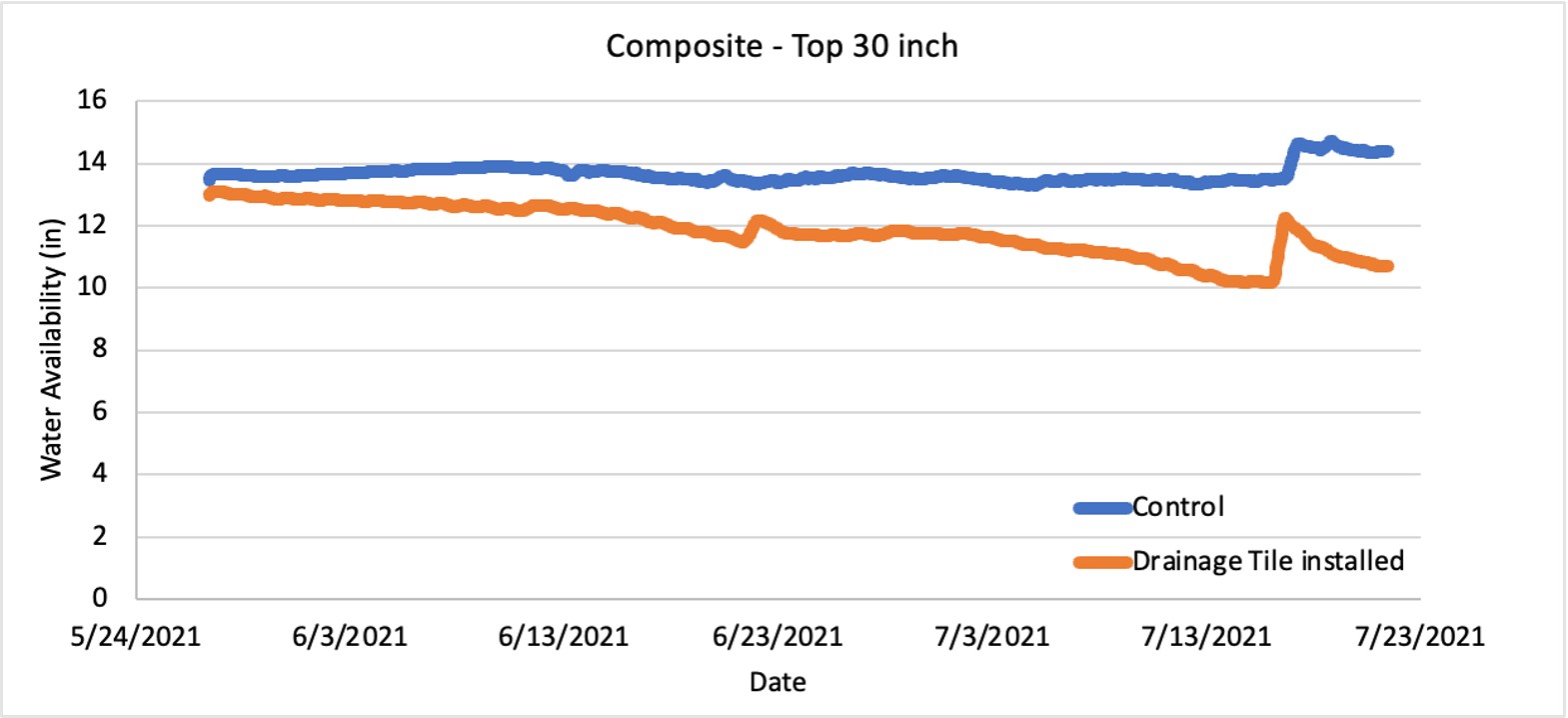

The third and fourth fields are in Pelkie, Michigan. We monitored soil moisture levels in control and AerWay soil aeration implemented areas. Figure 3 shows the top 30-inch composite water availability from each area. This graph shows that the area where AerWay soil aeration is implemented has better drainage than the control area. It suggests that using the Aerway implement may reduce the soil’s water-holding capacity.
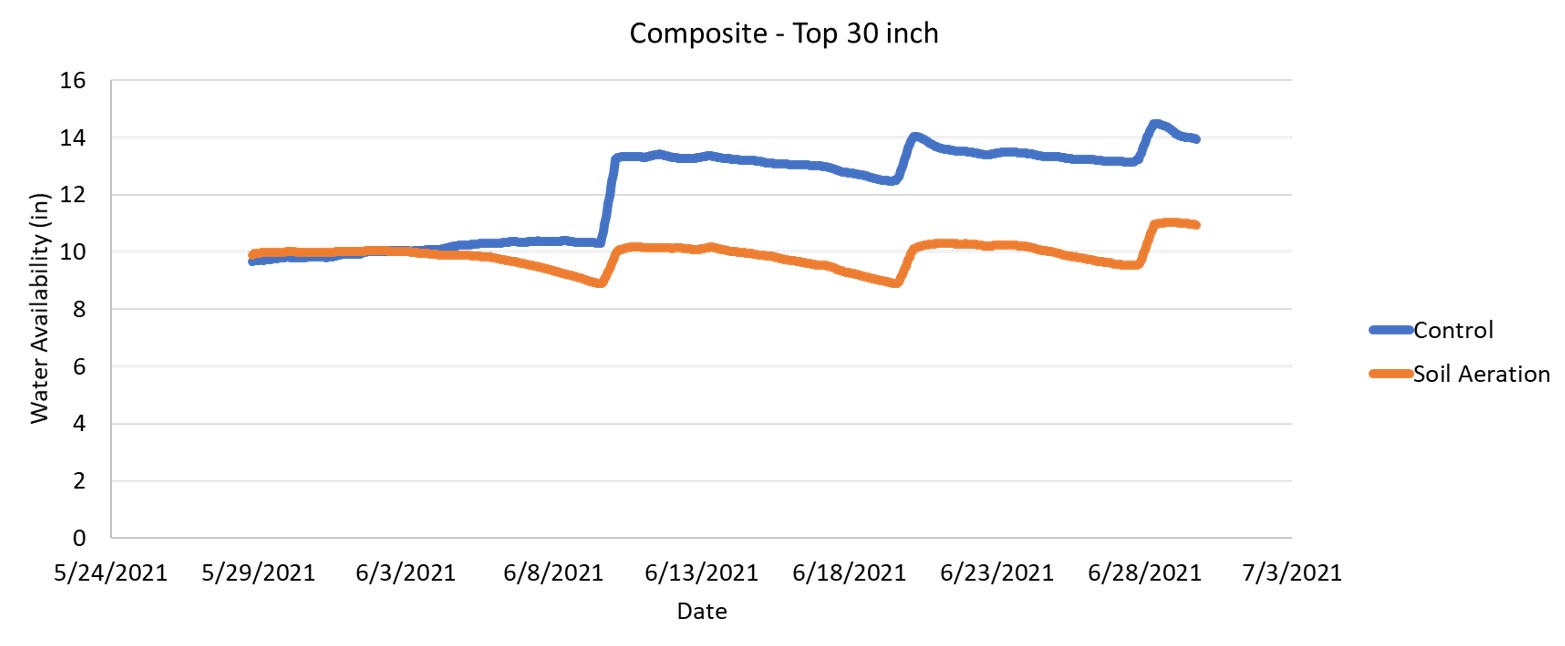

Discussion
The improved, digital data collection units were much more effective in collecting data than the water filled tensiometers used in 2019. The data collected, although incomplete at some sites, is much more useful.
The first field in Rudyard comparing soil water conditions where recent deep tillage at hayfield establishment was conducted versus a field deep-tilled at hayfield establishment 11 years previously shows distinct differences in volumetric soil water levels. The recent deep tillage provides an advantage in soil drainage.
The second field in Dafter comparing a field with subsoil tile drainage versus a portion of the same field with no subsoil tile drainage shows distinct differences in volumetric soil water levels. The tile drainage is effective in reducing the amount of soil water season-long, and especially after rain events.
The third and fourth fields in Pelkie compare a field with AerWay soil aeration treatment versus a portion of the same field without the soil aeration treatment. The soil aeration treatment is effective in decreasing the amount of soil water holding in the soil. However, the intention of the farmers using the Aerway implement is to increase the soils water-holding capacity during the drier summer months. The data collected this year does not support this idea.
All efforts by Upper Peninsula farmers compared in this trial resulted in improved soil drainage. No economic comparison based on crop yields or quality were attempted. Continued efforts to evaluate economically feasible improvements to soil drainage on clay soils in Michigan’s Upper Peninsula, including mole drains, should be considered.



 Print
Print Email
Email




